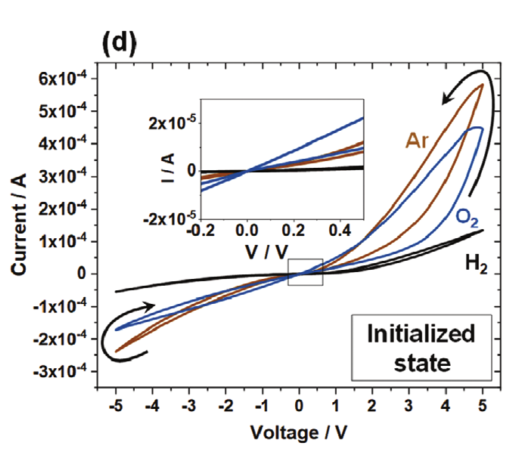
-
- au
Ici vous trouverez le papier de Klaasjan Maas
"The rising interest shown for adaptable electronics and brain-inspired neuromorphic hardware increases the need for new device architectures and functional materials to build such devices. The rational design of these memory components also benefits the comprehension and thus the control over the microscopic mechanisms at the origin of memristivity. In oxide-
based valence-change memories, the control of the oxygen drift and diffusion kinetics is a key aspect in obtaining the gradual analog-type change in resistance required for artificial synapse applications. However, only a few devices are designed with this in mind, as they are commonly built around ionic insulating active materials. This shortcoming is addressed by using a mixed ionic–electronic conductor as functional memristive material. This work demonstrates how the oxygen content in La2NiO4+ (L2NO4), tuned through post-annealing treatments, has a critical influence on the memory characteristics of L2NO4-based memristive devices. The presence of interstitial oxygen point defects in L2NO4 affects both its structure and electrical properties. High oxygen stoichiometry in the pristine state leads to an increased electrical conductivity, ultimately resulting in an improved memory window with highly multilevel, analog-type memory programing capabilities, desirable for analog computing and synaptic applications in particular. "


